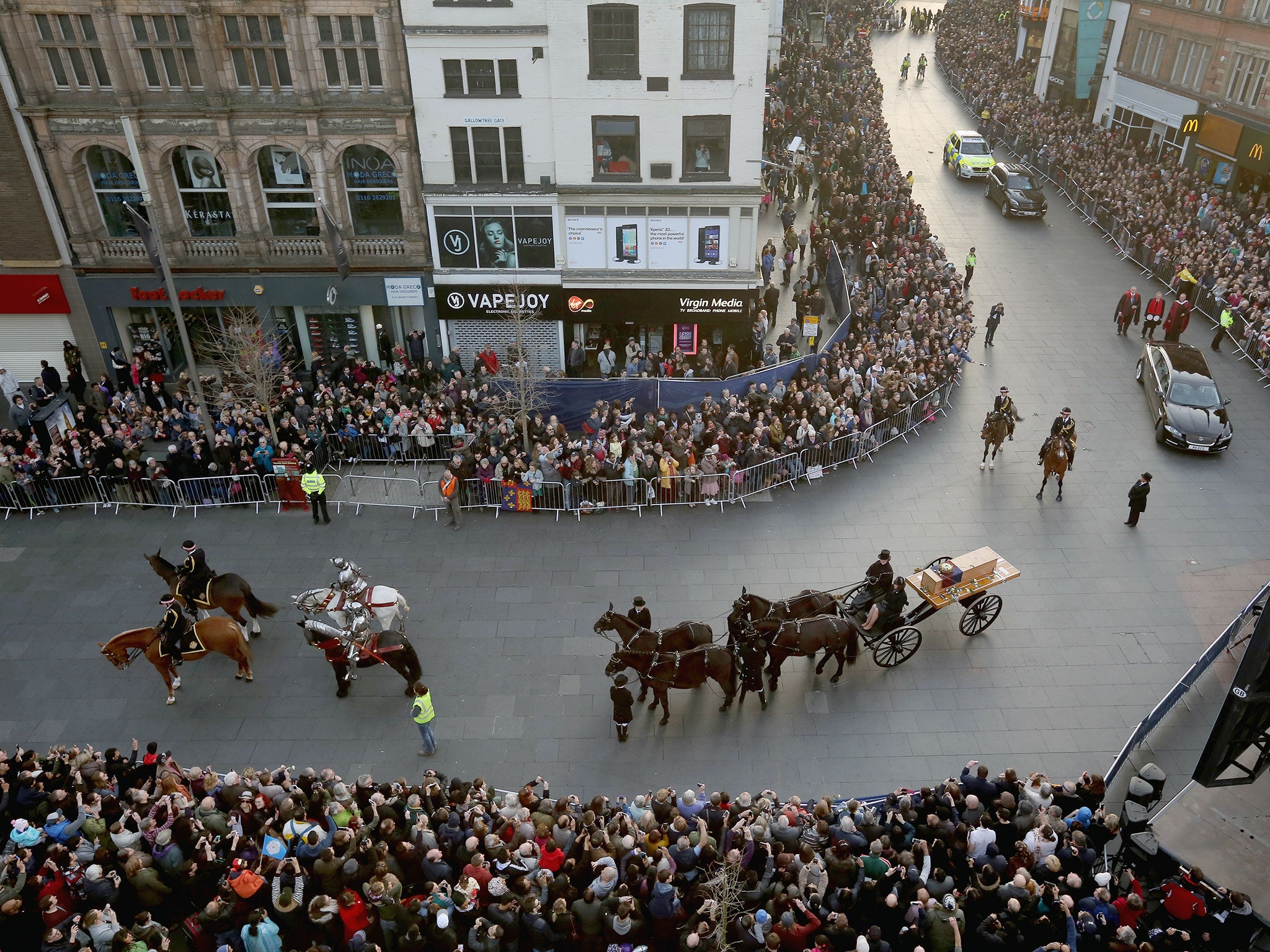Richard III: What is reinterment and why is the once-reviled Plantagenet king being reburied?
Thousands have turned out to witness the procession in Leicester

King Richard III, the last English monarch to be killed in battle and whose death effectively marked the end of the Middle Ages, will be buried in Leicester today.
What is happening today?
The remains of Richard III, reviled throughout much of history thanks to a hatchet-job from Shakespeare during the Tudor reign, will eventually be laid to rest in Leicester Cathedral.
The Very Reverend David Monteith told BBC Today programme that the service is “a recognition of the pain of what happened to him, the humiliation he suffered after death - which is really not what we would want for any human being and the church would want to point to his dignity."
This just means a second or further burial.
Having been discovered under a car park in 2012 (minus his feet unfortunately) the decision was taken to rebury the killed Plantagenet King with all the honours he lacked first time round.
Why can’t we place him in a museum?
There is huge debate over this, with many feeling that it is we should not allow the body to turn to dust in the ground – robbing future archaeologists of possibly invaluable insights as technology develops – and those claiming Richard has earned a dignified end.
On the one hand scientists and researchers have spent two years poring over his body and dispelling many myths – such as the fact he was a hunchback – but also where he grew up and what his diet was like. But some feel that with technological advances there is a chance that more can be learnt.
However, campaigners such as Mike Fletcher from Honour the Ancient Dead (HAD) believe all such bodies should be reinterred.
"It brings to mind a Victorian freak show," he claims.
What’s the legal position?
The ground has significantly shifted since the 1990s after there were calls for museums to hand back remains taken during colonial period.
In the 2004 Human Tissue Act allowed this to happen but unfortunately, the law never specified the fate of stored bodies – leaving many in a dubious grey area, despite campaigners’ calls.
The legal ruling for bodies of Richard’s age (the Burial Act of 1857) regulated the exhumation and reburial of recently discovered bodies, there is no legal clarity over stored bodies.
Who cares if he’s buried or not?
Apparently quite a few people: across three days this week 20,000 people are estimated to have queued to visit the king’s coffin in the city’s cathedral. Just 200, selected by ballot, will attend the actual service.
But one of the sciensts who excavated the skeleton believes he should be laid to rest.
“We have done a lot of work on him in the last two years and found out a huge amount,” Dr Jo Appleby told the BBC.
"I actually feel the time is right for him to be laid to rest in the cathedral - it is exactly what should be happening,” she added.
Subscribe to Independent Premium to bookmark this article
Want to bookmark your favourite articles and stories to read or reference later? Start your Independent Premium subscription today.

Join our commenting forum
Join thought-provoking conversations, follow other Independent readers and see their replies